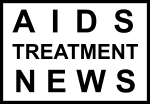January 10, 2011
Guidelines for the Use of Antiretroviral Agents in HIV-1-Infected Adults and Adolescents
What’s New in the Guidelines?
Key changes made to update the December 1, 2009, version of the guidelines are summarized below. Throughout the revised guidelines, significant updates are highlighted and fully discussed.
Introduction
The Panel emphasizes its recognition of the importance of clinical research in generating evidence to address unanswered questions related to the optimal safety and efficacy of antiretroviral therapy (ART). The Panel encourages both the development of protocols and patient participation in well-designed, Institutional Review Board (IRB)-approved clinical trials.
CD4 T-cell Count
The Panel recognizes that changes in CD4 cell count are seldom used in decision for ART changes in a patient on a suppressive ART regimen whose CD4 count is well above the threshold for opportunistic infection risk. In such patients, the Panel recommends that the CD4 count may be monitored less frequently, for example every 6 to 12 months (instead of every 3 to 6 months), unless there are changes in the patient’s clinical status, such as new HIVassociated clinical symptoms or initiation of treatment with interferon, corticosteroids, or anti-neoplastic agents (CIII).
Viral Load Testing
The Panel recognizes that low-level positive viral load results (typically <200 copies/mL) have been commonly reported with some viral load assays. For the purpose of patient monitoring, the Panel defines virologic failure as a confirmed viral load >200 copies/mL, which eliminates most cases of viremia caused by isolated blips or assay variability.
Drug-Resistance Testing
The Panel provides more specific recommendations on when to use genotypic testing to detect resistance to integrase strand transfer inhibitors (INSTIs).
• Because standard genotypic drug-resistance testing involves testing for mutations in the reverse transcriptase (RT) and protease (PR) genes, if transmitted INSTI resistance is a concern, providers may wish to supplement standard genotypic resistance testing with genotypic testing for resistance to this class of drugs (CIII).
• In persons failing INSTI-based regimens, genotypic testing for INSTI resistance should be considered to determine whether to include a drug from this class in subsequent regimens (BIII).
What to Start: Initial Combination Regimens for the Antiretroviral-Naïve Patient
Changes to the “What to Start” recommendations include the following:
• A regimen consisting of maraviroc (MVC) + zidovudine/lamivudine (ZDV/3TC) is now listed as an “Acceptable Regimen” because FDA approval of MVC for use in ART-naïve patients was based on the results of a randomized controlled trial using this regimen (CI).
• “MVC + tenofovir/emtricitabine (TDF/FTC)” and “MVC + abacavir (ABC)/3TC” have been added as “Regimens that may be acceptable but more definitive data are needed” (CIII).
• In response to a recent change to the Invirase® product label based on findings from a healthy volunteer study that reported significant PR and QT interval prolongations, ritonavir-boosted saquinavir (SQV/r)-based regimens have been moved from “Alternative PI-based Regimens” to “Regimens that are Acceptable but Should be Used with Caution.”
Hepatitis B (HBV)/HIV Coinfection
This section has been revised to provide more specific recommendations for management of HIV patients coinfected with HBV, including recommendations for patients with 3TC/FTC-resistant HBV infection and for patients who cannot tolerate TDF-based regimens.
Mycobacterium Tuberculosis Disease with HIV Coinfection
Based on recent randomized controlled trials showing survival and clinical benefits of starting ART earlier in treatment-naïve patients with active tuberculosis (TB) disease, the Panel provides the following recommendations on when to start ART in patients who are receiving treatment for active TB but are not yet on ART.
• All HIV-infected patients with diagnosed active TB should be treated with ART (AI).
• For patients with CD4 count <200 cells/mm3, ART should be initiated within 2–4 weeks of starting TB treatment (AI).
• For patients with CD4 count 200–500 cells/mm3, the Panel recommends initiating ART within 2–4 weeks, or at least by 8 weeks after commencement of TB therapy (AIII).
• For patients with CD4 count >500 cells/mm3, most panel members also recommend starting ART within 8 weeks of TB therapy (BIII).
Adverse Effects of Antiretroviral Agents
A new table format provides clinicians with a list of the most common and/or severe known antiretroviral (ARV)-associated adverse events listed by ARV drug class.
Additional Updates
The following sections and their relevant tables have also been updated:
• Coreceptor Tropism Assays
• Treatment Goals
• Initiating Antiretroviral Therapy in Treatment-Naïve Patients
• What Not to Use
• Virologic and Immunologic Failure (previously titled “Management of Patients with Antiretroviral Treatment Failure”)
• Regimen Simplification
• Exposure-Response Relationship and Therapeutic Drug Monitoring for Antiretroviral Agents
• Acute HIV Infection
• HIV and Illicit Drug Users (with new Table)
• HIV-2 Infection
• Drug Interactions (and Tables)
• Drug Characteristics Tables (Appendices)

0 comments:
Post a Comment